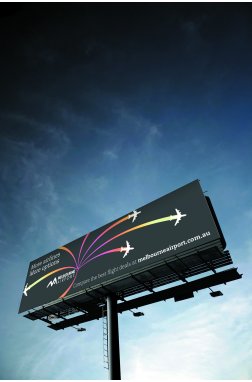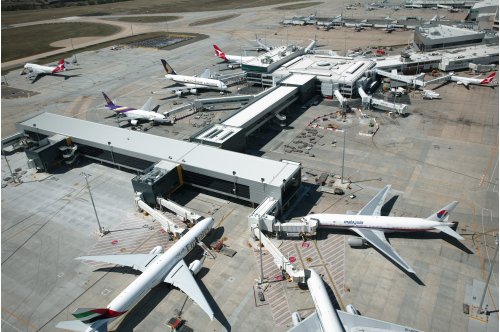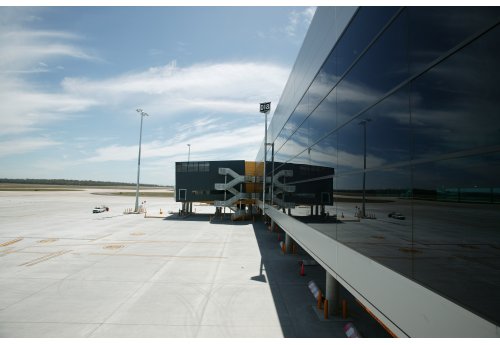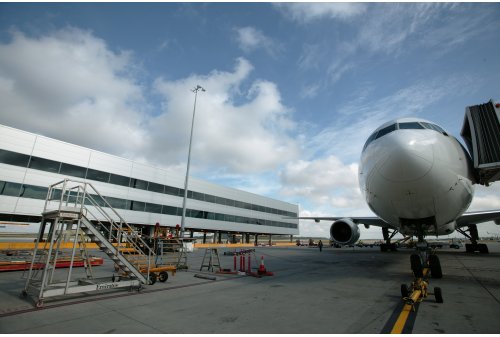Melbourne in Focus – Host of 127th IATA Schedules Conference in November 2010
 As Melbourne hosts the 127th IATA Schedules Conference this week, its story of continued strong growth is being brought to the attention of the world’s airlines.
As Melbourne hosts the 127th IATA Schedules Conference this week, its story of continued strong growth is being brought to the attention of the world’s airlines.
Melbourne Airport provides a 24-hour per day curfew free gateway to Melbourne and South-Eastern Australia. The second-largest city and airport in Australia, Melbourne served 27 million passengers in the latest rolling 12 months. In the 2009/10 financial year, 5.5 million international and 20.6 million domestic passengers passed through its gates.
Melbourne Airport continues to perform strongly with 532,000 international passengers in October, an increase of 14.3 per cent over October 2009 and the first time the airport exceeded 2.5 million passengers in a calendar month.
This follows on from an increase of 13 per cent in international passenger numbers at Melbourne Airport in the last financial year, outperforming key competitor growth of 8 per cent in Sydney and 1 per cent in Brisbane, in the same period.
When the last financial year is compared to the 2007/08 financial year, international passenger traffic in Melbourne has grown by 16 per cent, compared to 5 per cent in Sydney and 2 per cent in Brisbane.
Travel by Australian passport holders continues to increase, up by +16.0% over the same time last year, as Australians continue to take advantage of low fares, a strong Australian dollar and solid economic conditions.
The growth for October 2010 is the continuation of sustained trends that point towards significant shifts in the international passenger market within Australia.
Airlines have been voting with their feet, with Qatar Airways and V Australia entering the Melbourne market in 2009/10.
Airbus A380 services have increased, with the launch of daily Singapore Airlines A380 services and the progressive expansion of Qantas’s A380 services to daily London services and six services a week to Los Angeles by March 2011.

Airlines that expanded Melbourne services in 2009/10 included AirAsia X, Air Mauritius, Air Vanuatu, Garuda Airways, Pacific Blue, Philippine Airlines, Vietnam Airlines and Jetstar.
The Virgin Blue Group has added an additional weekly frequency to Los Angeles and increased services to Bali and Fiji.
Emirates is significantly boosting capacity through aircraft upgrades on the popular Melbourne - Dubai and Melbourne – Auckland routes.
Looking forward, Jetstar will be introducing daily flights from Melbourne to Singapore, twice weekly Melbourne – Queenstown services and daily Melbourne – Auckland services all from December this year.
For the first time three Chinese airlines will serve the Melbourne market with daily flights to China from later this year.
Melbourne will have more capacity to China than ever before and that for the first time Victorians would be able to fly direct from Melbourne to Beijing. In November, China Eastern will be increasing to daily Shanghai services from four flights per week and in December Air China will be increasing its services from Beijing and Shanghai.
This follows an earlier announcement by China Southern that its flights from Guangzhou are increasing to daily services from November.
Air India and Royal Brunei Airlines have announced they will be launching services to Melbourne in the coming months.
Melbourne and Victoria present a compelling growth opportunity for airlines and offer a platform for expansion not only into the Australian and New Zealand market but also the Asia Pacific market, the world’s foremost aviation region. Melbourne possesses attractive market dynamics, a booming population and a strong, growing economy. Melbourne’s catchment is wealthy, high-yielding and underserved by international air services.
Melbourne has a population of 4 million people and a catchment of 9.7 million people. More people are moving to Melbourne than any other Australian city, with Melbourne forecast to displace Sydney as Australia’s largest city in the future.
Australia’s strongest and most resilient economy during 2009/10, Melbourne is the nation’s business centre and home to 5 of Australia’s Top 10 companies. Melbourne leads Australia with consistently low and falling unemployment, confident consumers and record levels of construction.
As Australia’s major events capital, Melbourne boasts a strong calendar of sporting and cultural events and is winner of ‘World’s Best Sporting City’. Melbourne’s reputation for shopping, theatre, world-class food experiences, year round festivals and events and regional drawcards such as the Great Ocean Road, one of Australia’s key tourist attractions, and booming wineries and wine tourism make it a premier Australian tourism destination.
Melbourne is also Australia’s business events capital, with the largest exhibition and convention centre in the Southern Hemisphere, playing host to more and more significant international events.
Melbourne is underserved by international capacity relative to its population, with 600,000 of Melbourne’s international passengers flying domestically to and from Sydney for international flights each year. Despite having comparable population bases – 4.4 million in Sydney versus 4 million in Melbourne – almost 44% of international passengers from Australia fly via Sydney.
With demand for direct international services exceeding supply, Melbourne presents a ready-made market for airlines to target a number of Melbourne’s international markets, including China, Japan, North America and Europe.
Melbourne Airport presents an ideal operating environment for airlines to build their Australian operation. In 2009 the Centre for Asia Pacific Aviation recognised Melbourne Airport as “Low Cost Airport of the Year”.
A cooperative partnership focused on aviation exists in Melbourne
Melbourne Airport’s team works closely with the State Government of Victoria and City of Melbourne on airline business development, with the aim of delivering strong and innovative initiatives to grow airline operations out of Melbourne.
Melbourne Airport also provides real cooperative marketing opportunities to support airlines’ Melbourne operation, including the “Fly Melbourne” Outbound marketing campaign – the ultimate aim of the campaign is to facilitate increased outbound passenger traffic, by working collaboratively with all our airline partners.
Melbourne Airport continues to invest in significant capital works projects to cater for its rapidly growing market and deliver future capacity for growth, with a $330m upgrade of the international terminal currently underway to remain ahead of demand.
Melbourne Airport International Terminal Expansion







